
There are many Linux distributionsI would say too many, each with different development philosophies, oriented to different audiences or with very different objectives. This is the face and the cross of the Linux kernel and of the entire GNU framework, that a complete operating system can be made that together with the number of different projects that there are, give rise to a lot of distributions for all tastes, although this Suppose diluting the talents of many programmers instead of bringing them together ...
Since LxA we have made many articles about the Linux distributions that exist in the current panorama. Since recompilers of the best Linux distributions, analysis of more secure operating systems, light distributions, distributions according to your work, etc. Now we want to go one step further and dedicate an article entirely on Spanish Linux distributions, something that is sometimes forgotten due to the popularity of other foreign distros but that we must not forget.
A Little History
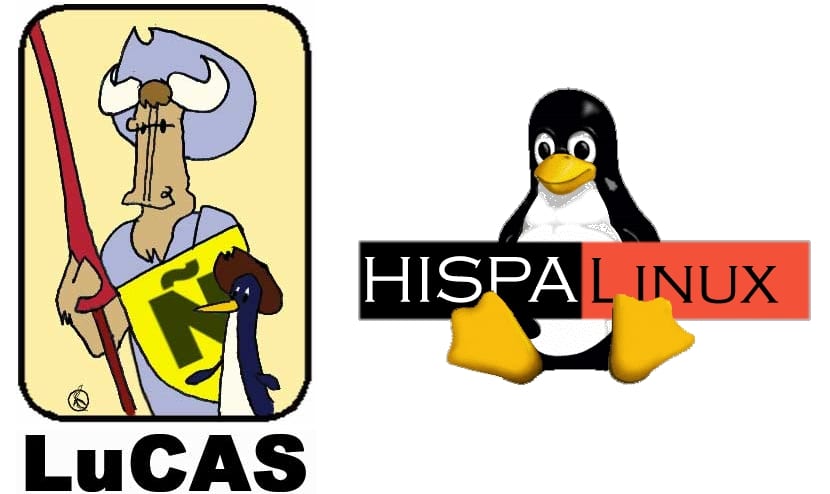
Linux is first released in 1991 and since then this fantastic open source project has grown a lot. Shortly after the launch of the kernel, the first distributions began to emerge, such as the first disks that included the kernel and a minimum of tools to function, or MCC Interim Linux from the University of Manchester, through TAMU at the University of Texas or SLS (Softlanding Linux System, the same that Patrick Volkerding used as the basis for Slackware in 1993) or the first CD-ROM of a Linux distro as such called Yggdrasil Linux.
En Spain the impact of Linux did not wait too long, and a non-profit association for GNU / Linux users emerged in 1997. It was called Hispalinux and its purposes were the dissemination and promotion of the operating system in Spanish, the support and organization of its users and developers within the Spanish territory, in addition to promoting free software in general.

But Hispalinux emerges as LuCAS formalization, a previous project whose initials come from Linux in Castilian and that wanted the same thing, although it was made up of a few people and less organized. Hispalinux (based in Zaragoza) grew so much that it became a benchmark in the Spanish-speaking world and one of the largest technology associations in Spanish.
Well, the essence of Hispalinux and LuCAS means, to publicize and help with documentation on free software in general, although focusing on the GNU / Linux system, it would become a germ in the homeland and would flood the network of documentation, references, how-to's, for both beginners and advanced users, but all in spanish, something that was appreciated and at the time was scarce, being the documentation almost complete in English.

This, together with the aid received from the European Union to develop this type of project, meant a boom in Spain, beginning to be born projects or distributions even under the stones. In my opinion, part of the money that was given was wasted, and instead of creating an important distribution, the work was fragmented and almost every autonomous community has its own Linux distribution, but the saddest thing is that many of these projects have already been abandoned ...
The first to join this Linux was Extremadura, with GNU / Linex. Andalusia would follow, taking advantage of Linux to create Guadalinex. Later the development of distros flared up and Catalonia had its own (Linkat), as did Madrid (MAX), Molinux from Castilla la Mancha, Augustux from Aragón, Trisquel in Galicia, Linux Global in Cantabria, EusLinux in the Basque Country, Asturix in Asturias, Lliurex in Valencia, etc. which we will discuss in more detail later.
List of distros made in Spain
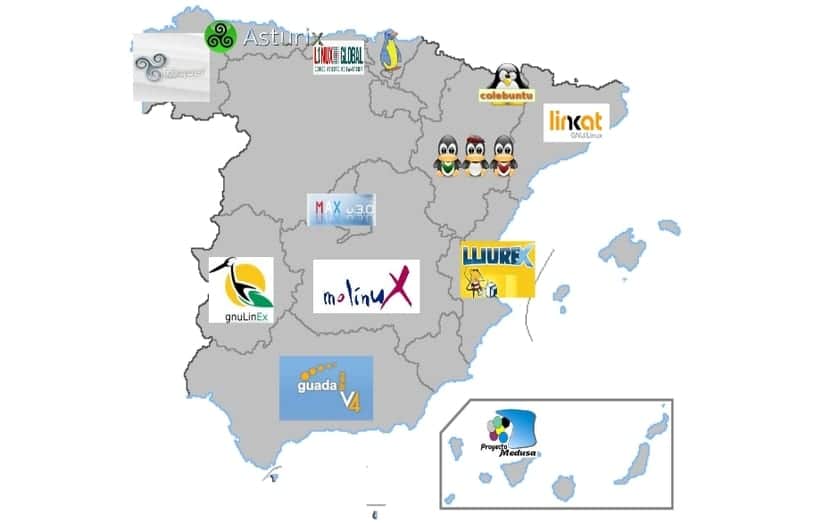
Showing up next a list with all the Spanish distrosSome of them have already been abandoned, others are still under development, but those that are no longer active as well as those that are deserve a mention to know a little better the panorama of GNU / Linux distributions in our country:
gnuLinex
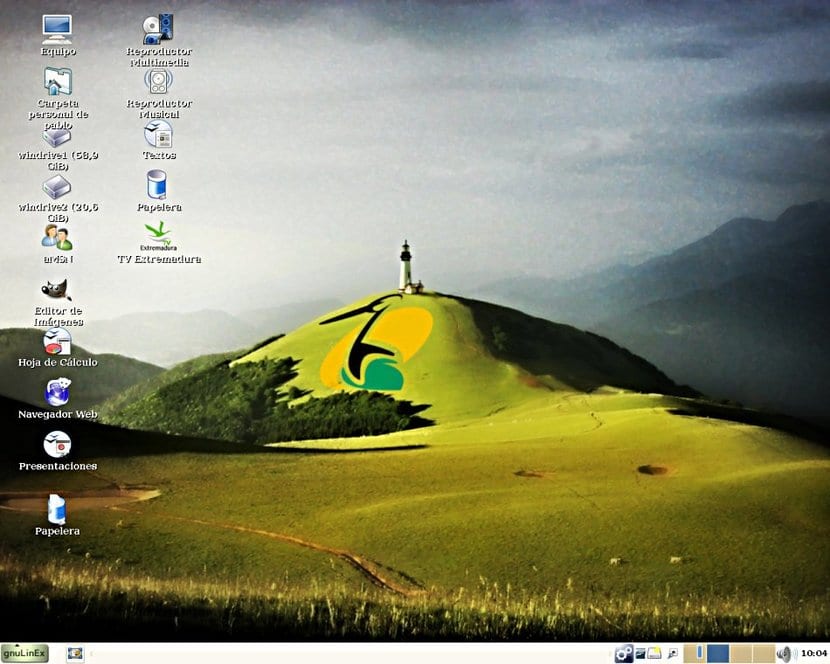
La latest stable version of gnuLinex was released in 2013, so the project seems somewhat abandoned. It is the Debian-based distro of the Junta de Extremadura. It was intended to create a distro for everyone, distributing CDs for free through local newspapers and reaching 10% of users in Extremadura according to some sources. For their work and dedication, the developers of this distro have won some awards, including Hipsalinux.
Guadalinex
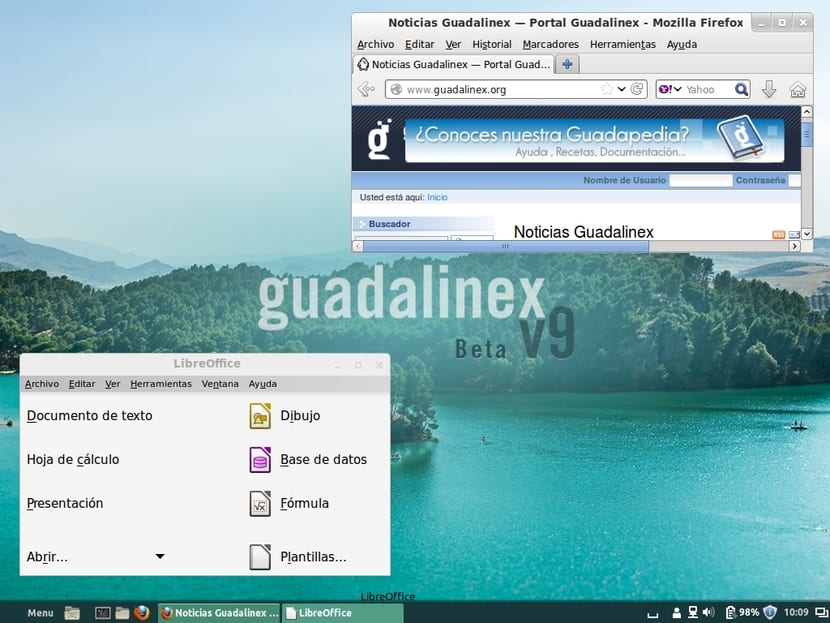
Guadalinex is a Linux distribution promoted by the Junta de Andalucía which was first released in 2004. Initially it was inspired by gnuLinex and based on Debian until version 3.0, on which it began to be based on Ubuntu. Later, in the current version, v9, not only have important new features been introduced, but the base has been changed, now being Linux Mint.
Other important milestones were achieved in the v7 version where it began to use ecological discs for its distribution, helping to reduce carbon dioxide emissions during its creation. In version v8 GNOME Shell was adopted as the interface. As a curiosity to say that a whole range of pets has been created such as Andatuz (main Tux), Flamenco (v3), Toro (v4), Wolf (v5), Owl (v6), Lince (v7), Chameleon (v8) and Bearded Vulture (v9) corresponding with animals of the Andalusian territory.
Linkat
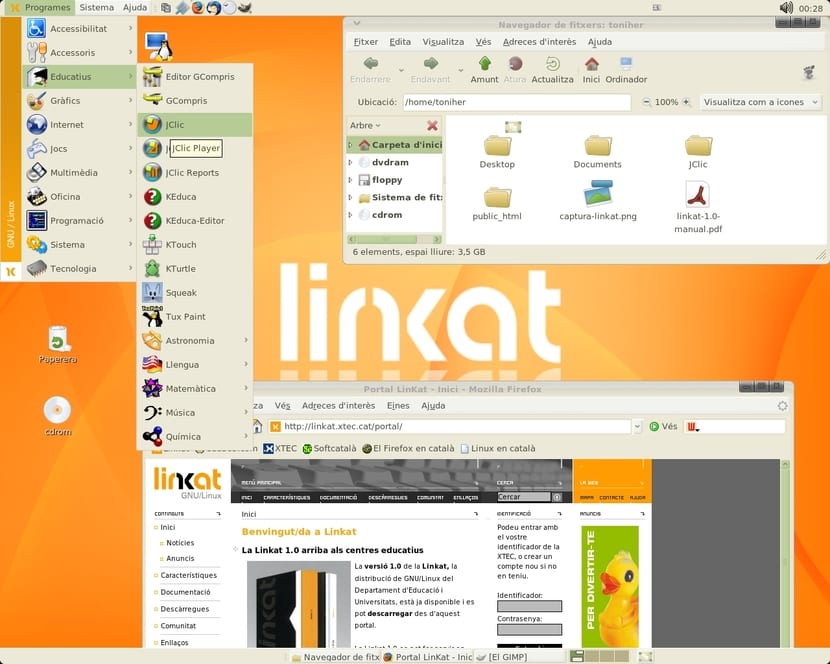
In Catalonia they have also wanted to have your Linux distro and this one is called Linkat. Of course it is promoted by the Generalitat de Catalunya. The latest version of this Linux in Catalan was released in 2014, based on the Canonical Ubuntu 14.04 distribution. Of course, it is free like so many others and it comes in different editions, such as Live CD, Autonomous Station, Center Server and Center Client.
lyurex
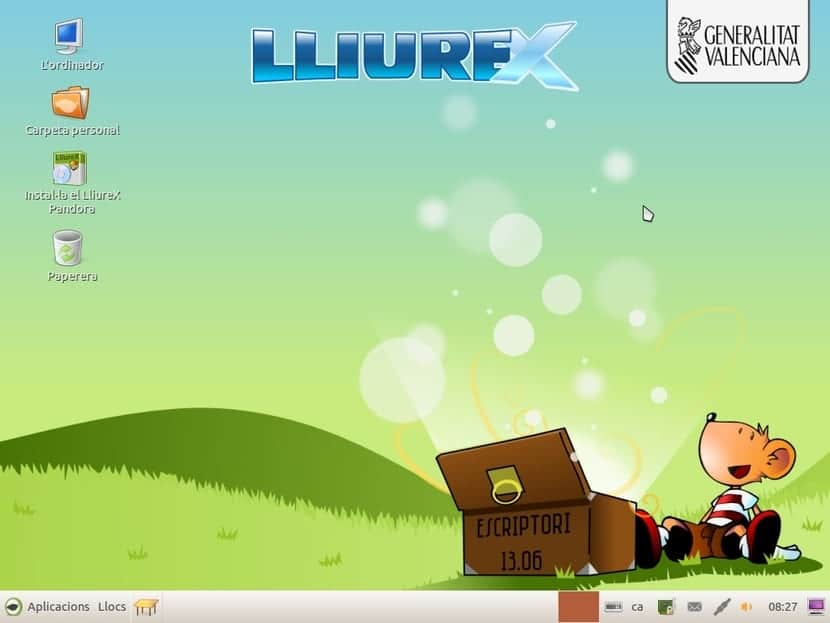
Lliurex igue active, the Generalitat Valenciana is behind this project. It is a Linux distribution that is available in Valencian and Spanish. It has a GNOME desktop environment and its development falls on the Ministry of Education, Culture and Sports to create a free and free operating system for educational use in the Valencian Community.
Since version 7.11 it is based on Ubuntu, but previously it was based on Debian. The two modes in which Lliurex is distributed are LiveCD and an ISO to install. Something interesting to note is that it has a proprietary application called Zero-Center which is responsible for managing the system thinking of users without knowledge of sysadmin.
MAX

Madrid also entered the world of Linux distributions and did it with the MAX. Like the rest, it is a free GNU / Linux distribution and with everything you need to work with it and with special emphasis on the educational sector. It was promoted by the Department of Education, Youth and Sports of the Community of Madrid. You can download it in both 32-bit and 64-bit versions and in the DVDLive and Server editions.
Molinux
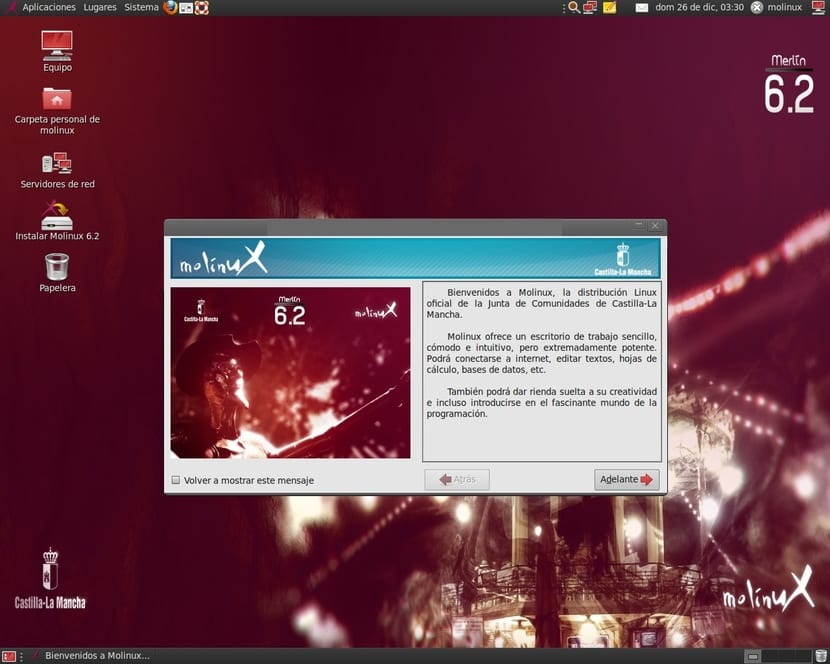
Molinux has the support of the Castilla-La Mancha Community Board. Its last stable version was 6.2 "Merlin" which was released in 2010, since then there has been no movement in the project. As you should know, it is based on Ubuntu and the name of the distro comes from the famous book by Miguel de Cervantes inspired by these lands, Don Quixote.
It has also developed a version called Molinux ZeroIt is an edition based on Puppy LInux 4.2 and it was intended for computers with low-power hardware. It could work on a computer with a 166Mhz processor, 32MB of RAM and a 64MB swap space, on a disk that had to be no more than 453MB for the distro to work.
augustoux
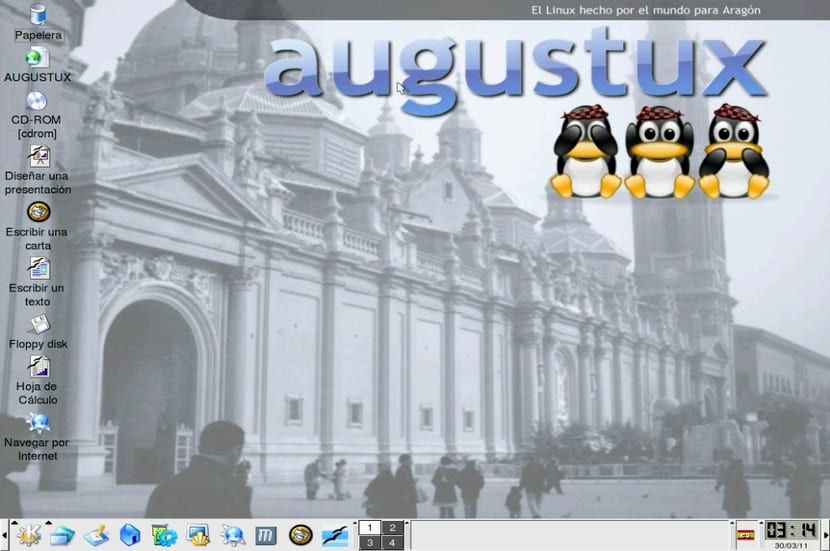
augustoux (name that comes from the old name of Zaragoza, Caesaraugusta and Linux) is an Aragonese Linux distribution that was based on Knoppix, Debian and Hispalinux Metadistros. At present it does not have much interest, since the project has been abandoned like others that I present here, these abandonments are the culprits of the waste of money from the subsidies coming from the EU, but anyway ...
triskele

It is a great project that is still in development. Trisquel is developed by the development community of Trisquel y Sognus SLU, based in Galicia, although the germ started in 2004 from the University of Vigo. It is available in languages such as Galician, English, Spanish, Catalan, Basque, Chinese, French, Indian and Portuguese. Its name, as you will understand, comes from the famous symbol so present in the Galician lands.
He has become quite internationally famous for being totally free and for his qualities, but above all for being sponsored by Richard Stallman. Trisque is based on Debian and the source repositories have been changed to Ubuntu from version 2.0. The kernel is modified to eliminate proprietary firmware and only use free software, that is why it is endorsed by the FSF as 100% free. You can find it in Edu, Pro editions and the normal edition.
Global Linux
Linux Global arrives from Cantabria. Thus, the Cantabrian community turned to free software, distributing about 7000 CDs of this distro that was based on the Andalusian Guadalinex. The strange thing is that it has not been installed in public centers, although the government does not rule out doing so in the future.
EusLinux
EusLinux is another distro, this time Basque. Promoted by the Vice-Ministry of Language Policy of the Basque Government. The language is Basque, in fact the main work that has been done is to translate Debian, GNOME and some projects or packages that are integrated into this language.
Asturix
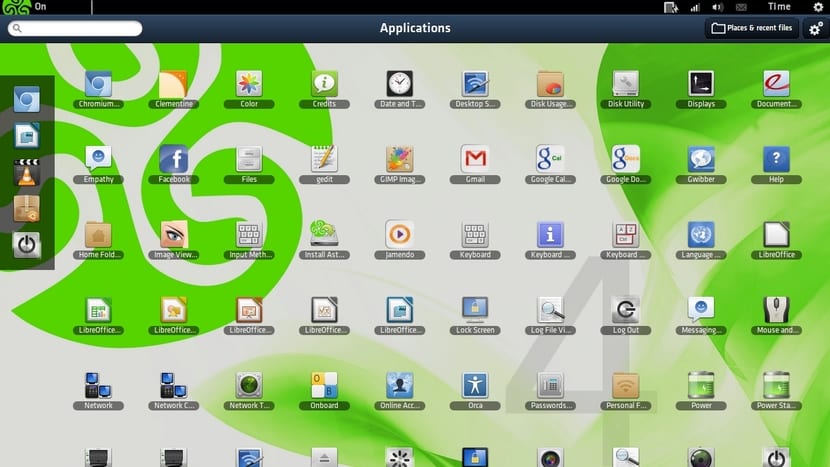
Our dear Luis Ivan Cuende was the creator of this distro. Asturix is also based on Ubuntu and with some interesting innovative technologies, which differentiate it from other projects, integrating some of its own. His interest crosses borders and has come to be used in various countries and referred to in important media, as well as winning some awards.
Now Cuende seems focused on his current projects and since 2012 a new version has not been released. In the latest version, Asturix 4, a great novelty was included, the desktop environment called Asturix On very innovative and web-based that you are sure to like.
Bardinux
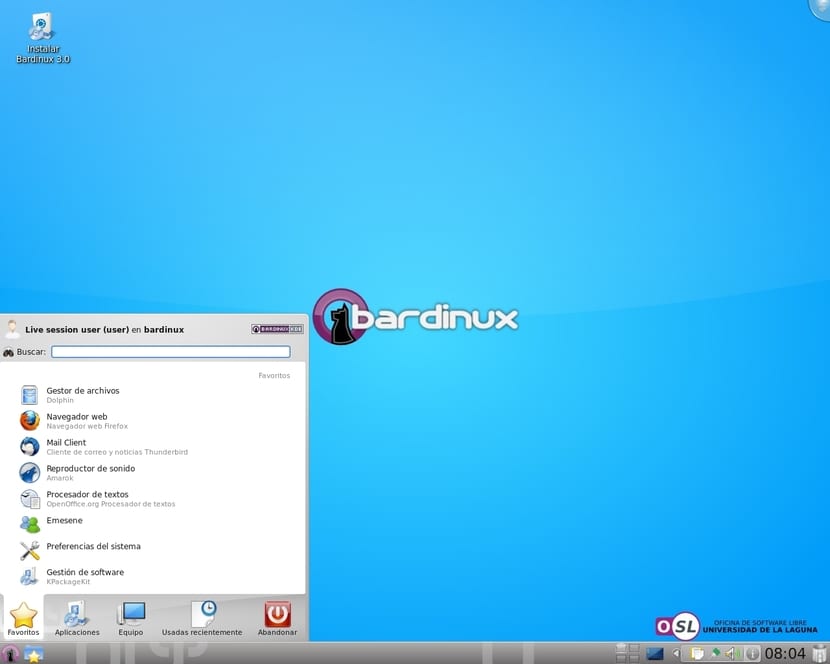
Bardinux is another Spanish distribution based on Kubuntu and adapted by the university community of the Free Software Office of the ULL (University of La Laguna). In it, the most interesting software is recompiled and in which the ease of use is emphasized. It is used for different projects such as servers for the students' mail, as a virtual hard disk, and other educational projects.
melinux
The Autonomous City of Melilla has created Melinux, another distro that seems also abandoned, and also co-financed by the ERDF (European Regional Development Fund) by 80%. Its last stable version released was 6.0 back in 2013. It has a KDE desktop and based on a start in openSUSE 10.0, and then start to be based on Kubuntu in the latest versions.
medusa
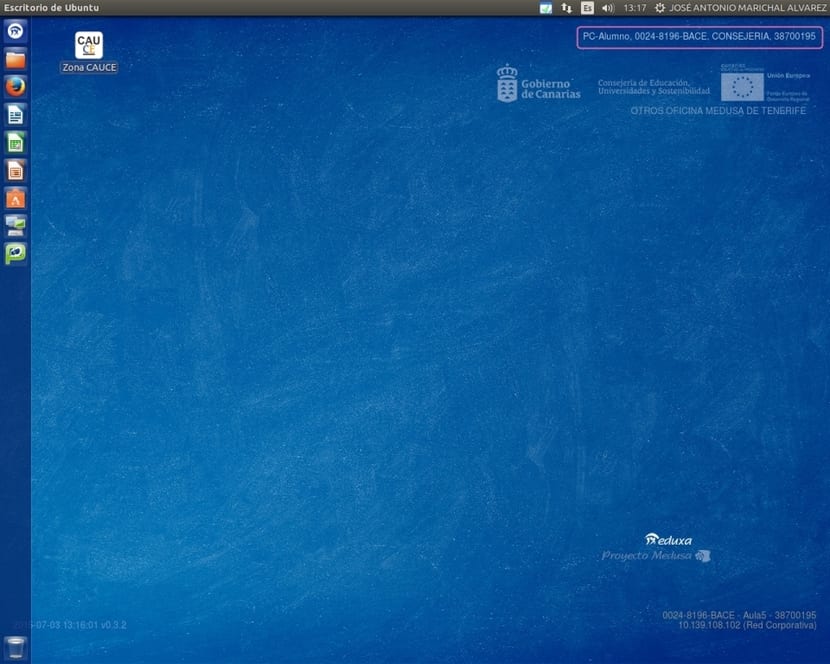
Meduxa is the Canary Islands government distro. In the latest version, 14.04, an effort has been made to improve some details. As you can guess from its numbering, it is based on Ubuntu 14.04 LTS on which a series of additional functionalities and features are added, but it is still very similar to the base.
aranlinux
AranLinux is another Basque distro that is presented on the official website as the Arangoiti operating system. It is still active and also has a Pro edition that is in development. On the web you will find a lot of information, as well as the ISO to download and test it. There is even information for the disabled who use the distro, something that these people will appreciate and that some projects forget.
Antergos

Great Galician project, Antergos it means "ancestors" as a sign of its connection with the past and the present. It was previously known as Cinnarch, since it is based on Arch Linux and with the Cinnamon desktop environment by default, although you can have other graphical environments available. It is still active and is highly recommended, in this case it is not supported by any government.
WiFi

Perhaps it is another of the most famous, although not everyone knows that it is Spanish. Wifislax is based on Slackware and is distributed on LiveCD and LiveUSB. Its main function is to conduct network security audits, although many use it for unethical purposes such as hacking the neighbor's Wi-Fi password. Like other distros intended for security audits such as Kali, Santoku, DEFT, etc., Wifislax has a complete repertoire of packages for these purposes.
Rescatux
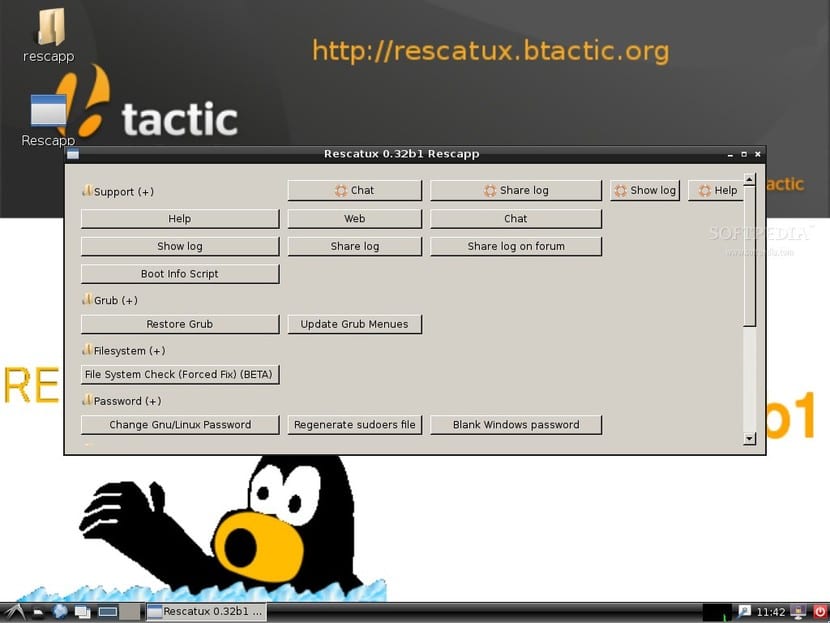
Very practical like the previous one. Rescatux is Spanish and focused on recovering a broken system. It is LiveCD to rescue Windows systems, with tools for this purpose such as Rescapp and other functionalities so that you can restore GRUB, Windows, recover passwords, recover the hard disk and other tools for technicians.
servo
ServOS is a CentOS-based distribution and server-oriented. It has its own software repositories to include some packages that CentOS does not include in theirs. From the web you can download the ISO of a LiveCD or a LiveDVD, the first being a clean image in which you will have to install the applications, and the second is complete, with everything pre-installed and preconfigured.
kademar
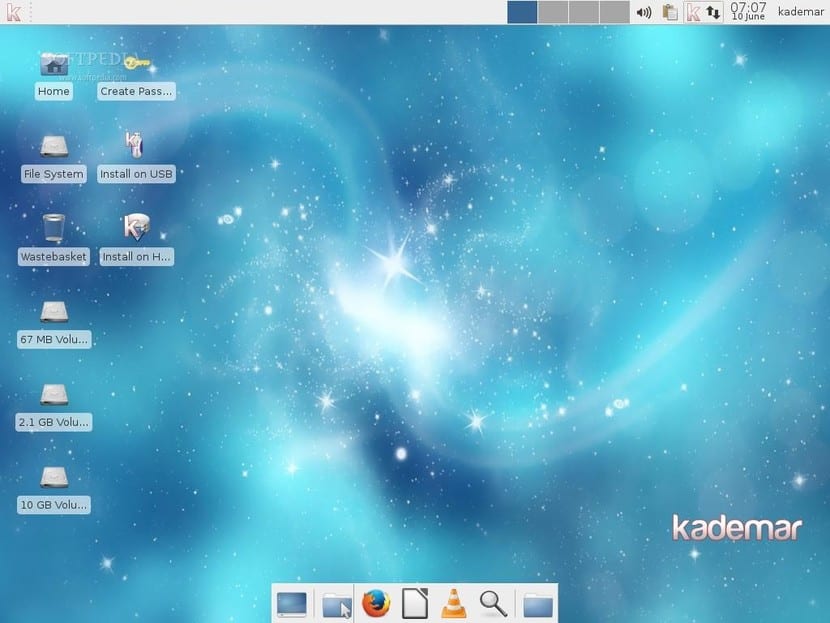
On the official page of Kademar present it as a free operating system, fast, easy, versatile and elegant. Intended for the desktop and general purpose like other distros. Its developers have made an effort to guarantee usability and comfort for the user when working, offering a unique experience. They have also made a selection of pre-installed programs so that you can enjoy from the beginning, but exclusive tools for the inexperienced user are also included, both in the Live and in the version to install.
ICABIAN
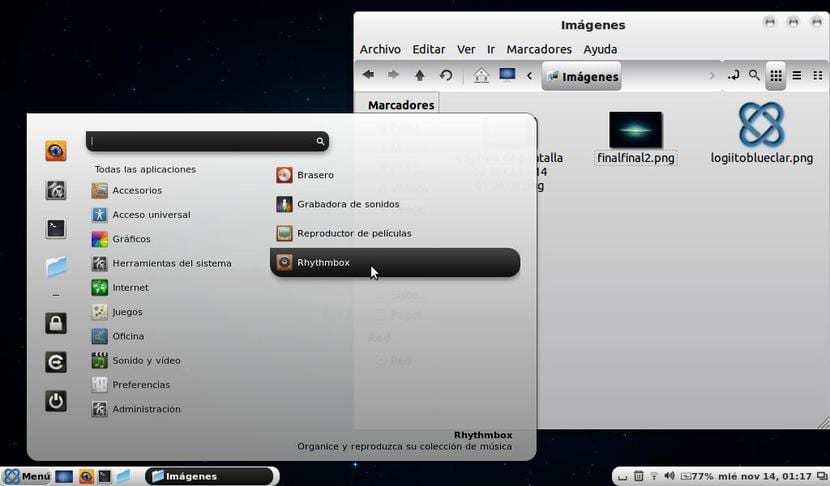
ICABIAN is a Linux distribution which is currently under development and is based on Debian. A student association of the Universidad Pontificia Comillas is created by "LINUXEC". It is geared towards science and engineering students and teachers. It does not contain an installer, so it must be used in LiveUSB or LiveCD mode.
DMDC
DMDC is the acronym for Debian Mate Dsktop Cosillas, which gives a clear idea of what it is about, basically a Debian with the Mate desktop environment and developed in order to make life easier for those who come from the Dark Side (Windows) such as on the project's own website they say. Currently it is still in development and as a data to say that from version 3.0 it begins to be based on Debian Testing.
SHELD Mini NO
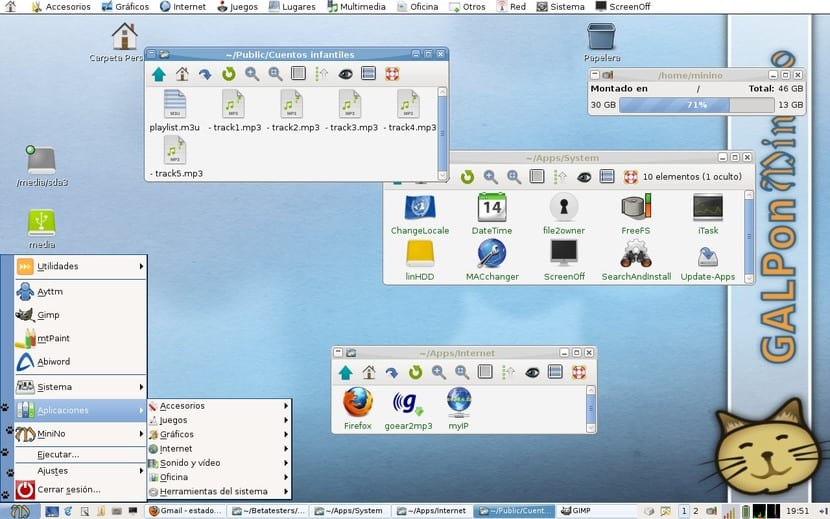
SHELD Mini NO is another Spanish distro based on Debian and distributed on a LiveCD with the installation option. It is optimized to function efficiently on older computers, therefore it is light and does not require very high hardware resources. It can run on a computer with a 32-bit processor, 128MB of RAM, and a 2.5GB hard drive. That is recommended, although it has been tested on a Pentium 117Mhz with 32MB of RAM and only 1MB of video memory and can play videos and function properly.
Void linux
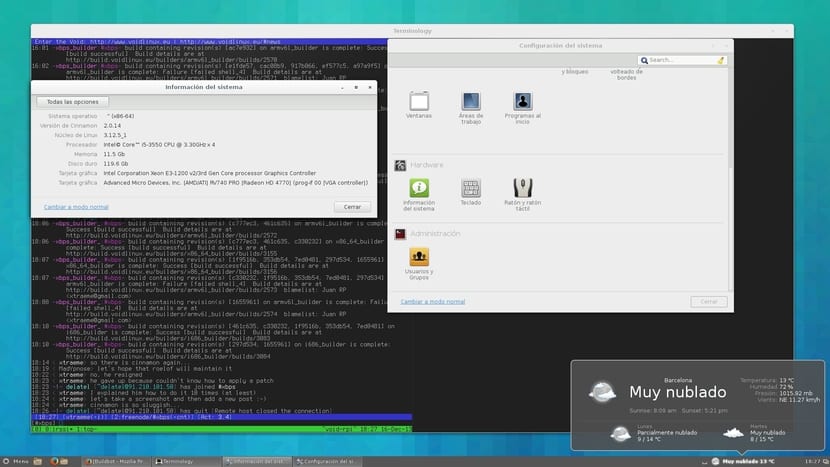
Void linux comes as a stand-alone Linux operating system or distribution developed by volunteers. You can count on desktops like Dash, Enlightenment, Cinnamon, LXDE, MATE, and Xfce, as you see all light. It is based on XBPS (X Binary Package System) and in which blogs are excluded from the LInux kernel to make it 100% free. Curiously, it was created in 2008 by a NetBSD maintainer named Juan Romero Pardines.
ASLinux Desktop
ASLinux Desktop is another Spanish distro for 32-bit platforms and aimed at Spanish speakers. It is based on Debian and the KDE desktop, focused on the desktop. Unlike others, it is developed by an Andalusian company called Activa Sistemas. They have made an effort to make it powerful, versatile, friendly and easy to use. Despite being developed by a company, it is free, although it is another of those obsolete projects ...
fusion
fusion It is a Spanish distribution formerly known as Uberyl (name that comes from Ubuntu and Beryl, before Compiz and the Beryl project were unified). It is based on Ubuntu and has a Compiz Fusion 3D window manager, hence its name, combining the simplicity of Ubuntu and the beauty of Compiz Fusion. It is currently discontinued, therefore it lacks interest, although I present it here as it is another distro in Spain.
Catix
Cátix is another Catalan distro. It is a LiveDVD that does not need installation and as you can see it is intended for the Catalan user as it is in this language. The last stable version was released in 2009, being another one of those projects with little movement lately. It was created by Antoni Mirabete i Terés, TecnoCampusMataró and the Councilor Ciutat del Coneixement of the Barcelona City Council.
Plant

Plant It's a weird project, but it's an open source Linux-based email and groupware solution. It is natively compatible with Microsoft Outlook and implements the Microsoft Exchange protocols on standard open source components. Therefore it can be said that it is a Debian with a specific purpose ...
Labarinux
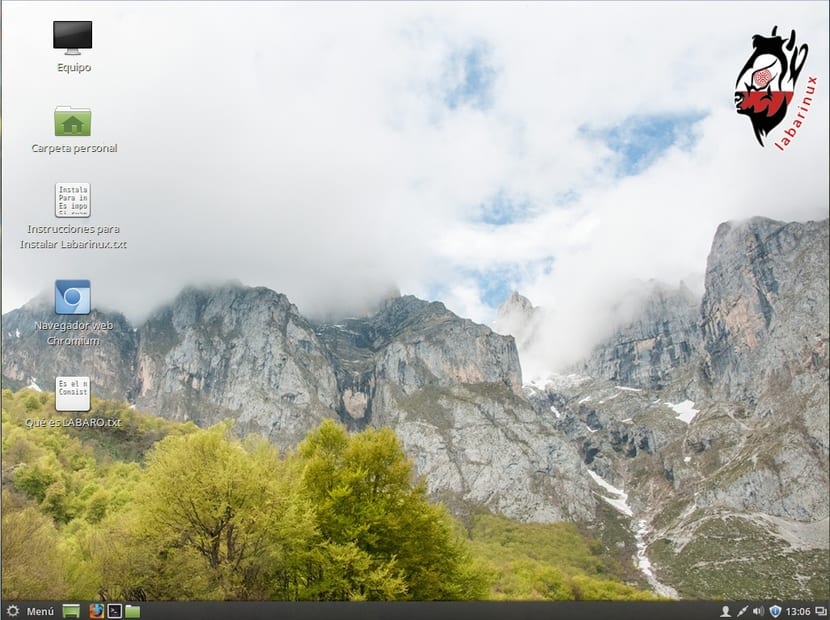
Another Spanish project is Labarinux quite new (2015), which is still active. It is a community in Cantabria that develops this distro based on Linux Mint and is available for free. It arises after investigating that LinxuGlobal had existed in the community years ago and that it had fallen into disrepair, resuscitating the spirit of Cantabrian Linux with this new project.
wando linux
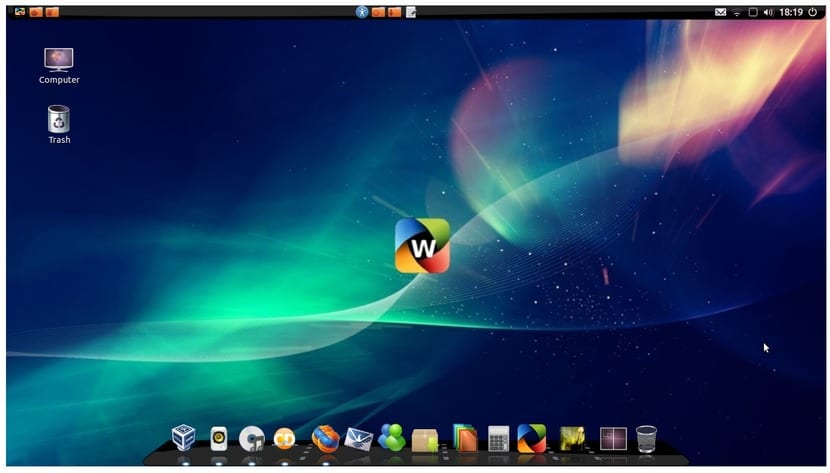
Distro Hispano-Argentina called Wando Linux. The developers of this distro in Spain and Argentina want to create a LiveUSB distro based on Debian portable and in which the changes can be saved, something that in LiveCDs or LiveDVDs cannot be a read-only memory. It can also be installed on your computer with a selection of 1.5GB of basic packages for multimedia, Internet, programming, science and office automation.
Dax OS
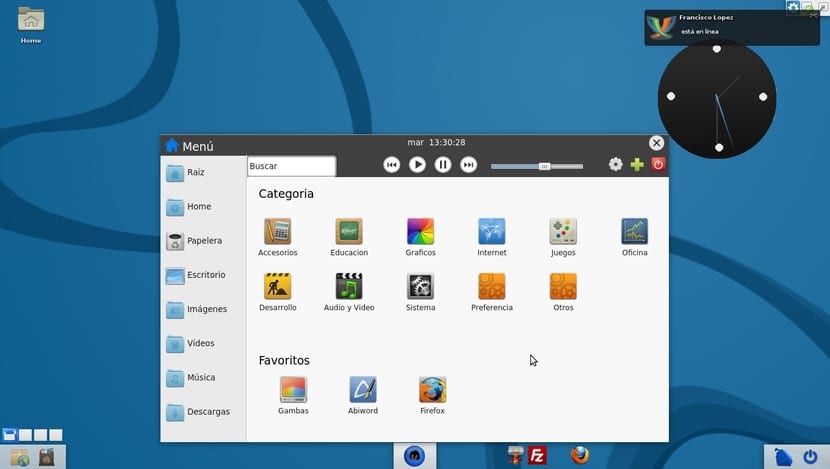
The latest version was released in 2013, DaxOS is another Ubuntu based Linux distro which differs from this one mainly in that it uses Enlightement as a desktop environment. It is simple and light so that any user can enjoy it.
GalSoft Linux
Galsoft Linux seems abandoned, is a Spanish project based on Lubuntu, and therefore lightweight, that can be run directly from a LiveDVD or a LiveUSB and specially optimized for computers with few resources. The project was started by the Junta de Galicia in 2012 and as a result the Galsoft group began to work on it.
wifi way
WiFiway is another Linux distro very similar to WifiSlax, with the intention of conducting security audits to WiFi, Bluetooth and RFID networks. Therefore it will include many tools for it. And as a curiosity to say that although it is inspired by WiFiSlax, it is not based on any other distro, but starts from scratch using Linux From Scratch. Some of the developers of WifiSlax also worked on WiFiway, although it is already an obsolete project.
EHUX
EHUX is a Basque project generated at the University of the Basque Country. It is based on Kubuntu to offer a quality service within the campus and with the idea that the entire university student body knows the Linux world and its advantages.
Lazarux
Lazarux LiveCD is another distro for those who speak Spanish that includes a wide set of applications for people with some visual impairment. To do this, it integrates a series of voice and reading control packages, as well as other accessibility tools.
colebuntu

colebuntuAs its name suggests, it is an Ubuntu-based distro. It was born in the rural school of Aragon for use in many educational centers in the region that use it. It is free and simple, designed for users who migrate from other operating systems such as Windows. It is not a light distro, quite the opposite, since it has a large package and is not optimized.
Vitalinux EDU
Vitalinux EDU is another Ubuntu based Linux distribution for educational environments, as defined on the official website of the project. The project inherits the experience of other projects such as Colebuntu, AZLinux and MigasFree to combine it in a single distro under the baton of the DGA Department of Education. Unlike Colebuntu, this one is still active at the time this article was written ...
I hope you liked this article and that it has helped you get to know a little better the national panorama in terms of Linux distros, in which there are interesting projects that are sometimes forgotten. On the other hand, do not forget to leave your comments or suggestionsThey are welcome ... I have already left my criticism and that is, if there is already a project, why create a fork or a distro for the same instead of focusing efforts?
My niece uses Lliurex in high school. The truth is that I was surprised, I thought they were using Windows. Now I have given him my old laptop with Xubuntu and I am so happy.
Thank you so much!! a great compilation.
and only trisquel is really robust, the rest are simple copies with hardly any originality and to top it all, many of the productions are financed by municipalities in the Spanish case, autonomies wasting money in a bad way.
Trisquel is not valid for people without Linux knowledge, which is what these distributions claim, most of them today are down or half abandoned but their effort was surely useful and attracted many young people to use Linux and in the future who knows may that they go to Trisquel. If those young people had been taught Trisquel, they would surely have passed it as complicated and would continue with Windows. You cannot give people who are not dedicated or passionate about computing a distribution like Trisquel that comes without drivers or proprietary firmware already installed.
A couple of facts about Guadalinex, it was not born in 2004 but rather before, although precisely the version of that year was the best by far.
From there they stopped relying on Debian to do it on Ubuntu and the truth is that it leaves a lot to be desired, for that I prefer Ubuntu with the graphical environment that I want (I don't like unity but I can put gnome flashback or lxde, for example).
Ah! and the second data is that it is still active ... but not a shadow of what it was, I'm talking about the normal Guadalinex, the citizen version is better, although it is an Ubuntu with gnome flashback and little else.
Trisquel is not valid for people without Linux knowledge, which is what these distributions claim, most of them today are down or half abandoned but their effort was surely useful and attracted many young people to use Linux and in the future who knows may that they go to Trisquel. If those young people had been taught Trisquel, they would surely have passed it as complicated and would continue with Windows. You cannot give people who are not dedicated or passionate about computing a distribution like Trisquel that comes without drivers or proprietary firmware already installed.
By the way, rescatux and wifislax, are the Spanish distros that contribute the most to what is from my point of view.
You also have ours from Bilbao, http://aranlinux.arangoiti.info
I would like to know what made you think that Augustux had some kind of subsidy, European or not, to be an example of waste among so many other projects. And about zentyal (http://zentyal.com), it would be better if you learned a little more about what this multinational project really is.
Vitalinux should be named (http://vitalinux.org) as the successor to Colebuntu. With school guidance, it is being implemented in several Aragonese educational centers using the Migasfree remote configuration tool (http://wiki.vitalinux.educa.aragon.es).
Hi, I miss debian-based DMDC (https://sourceforge.net/projects/dmdc10il/)
Good collection.
All the best
Another one that I miss is Serv-OS based on CentOS (http://www.servtelecom.com/downloads/category/servos/2-x/x86_64-2-x-servos/)
Very good indeed.
Hello Julio,
I answer you but I hope it is also valid for other comments. Thank you very much for your contribution, as you can see I have tried to update the list with what you are saying. As you understand, I do not know all the Spanish distros, and surely there is some error, but it is good that there is a feedback with you and thus be able to make better articles.
Greetings and thank you!
GalPon Minino is also a Galician distro, specifically in the province of Pontevedra ( https://www.galpon.org/ ). It's nice to see how in Galicia we have a good car full of distros. It remains to comment on a project based on Ubuntu that began many years ago from a distro for use by the administration, but that with the change of government was frustrated: Galinux. The issue is that the project has already started with controversy because they stole the name of a previous distribution that had the same name.
As your article, Isaac, shows, the Spanish geography is full of anonymous "heroes" (many of them voluntary and selfless) who have embarked on different adventures throughout the last decades.
It is true that many efforts have been repeated, perhaps some unnecessary, but each initiative must continue to be valued and applauded.
For my part, when the Linux migration project began within the organization where I work, none of the members had knowledge of the Operating System or other projects that could help us.
Over time, we have been sharing experiences with other active groups, such as Linkat, Guadalinex and Lliurex and we have learned something from all of them. And also over time, apart from the day-to-day work to build AZLinux (Linux distro / adaptation for the municipal employee of the Zaragoza City Council), we have created the Migasfree project in our free time (with the idea of customizing for other organizations a base distro) and we have collaborated with other collectives on Vitalinux. This germ has borne fruit by serving as an incentive for our regional government to implement Linux in the classrooms with the Vitalinux EDU DGA project.
From my point of view, every effort is worth it if it serves to disseminate and show others the multiple advantages of free software for society.
Very good article, which has motivated me to switch to Linux. Thank you.
Thanks for the blog, a job well done that has particularly allowed me to learn about the development of linux in Spain.
Excellent information, thank you very much for sharing it!